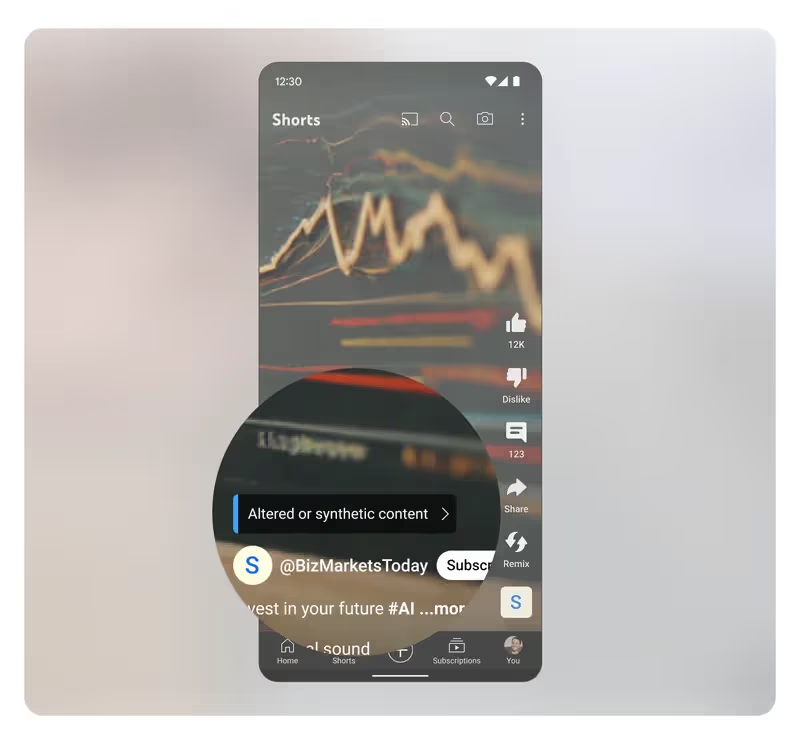YouTube Releases Guidelines for AI Disclosure

In response to concerns about the large amount of fake and manipulated content on its site, YouTube announced that it will now require AI disclosure. YouTube's Content and Social Media Manager, Andrew Hutchinson, started this project on March 18, 2024. It shows that the platform is committed to making AI-generated content in its Creator Studio more clear. Basically, people who upload material that looks real because AI was used to change it will now have to check a box during the upload process to say that it is fake. This step is very important for stopping the spread of deep fakes and false information and making sure that the content shared on the site is real.

The new tool requires artists to notify viewers when their work includes realistic elements that could be mistaken for real footage, especially when it uses altered or fake media made possible by AI. It's important to note that YouTube doesn't require material to be disclosed if it is obviously fake, animated or has special effects. This project adds to YouTube's plan for responsible AI innovation, which was announced in November. It includes labels, labelling requirements, a new way to make privacy requests, and making responsibility a part of all AI products and features.
This project's main goal is to improve clarity between YouTube creators and users, which will help build trust in the community. Content that needs to be disclosed includes things like digitally changing the likeness of a real person, changing video of real events or places, or making realistic scenes of made-up major events. YouTube makes it clear that they understand the variety of ways that creators use generative AI when making video. So, artists don't have to say if generative AI was used to get work done, like making scripts or automatic captions, or if the fake media is thought to be irrelevant or unrealistic.
YouTube is planning to display disclosure marks on a number of different platforms and file types so that they are easier to understand. Most videos will have a label in the expanded description, but videos that talk about sensitive topics like health, news, elections, or money will have the label right on the video itself. These labels will be slowly added to all YouTube interfaces, starting with the mobile app and moving on to the PC and TV interfaces. YouTube wants to give people plenty of time to get used to these changes, but it also hints that creators who regularly don't share important information could be punished.

In addition to these steps, YouTube stresses its dedication to working with others in the industry to make digital material more open. Through its role as a steering member of the Coalition for Material Provenance and Authenticity (C2PA), YouTube helps with efforts to make sure that digital material is real and honest. At the same time, YouTube is working on a new privacy process that will make it easier to get rid of AI-generated or synthetic material that mimics real people, like their voices or faces (aka. deepfakes).
In cases where creators don't follow the rules for disclosure, YouTube can step in and add the necessary label to the video. YouTube's proactive method shows that it is committed to upholding transparency standards and reducing the spread of content that could be misleading. These changes are the latest step that YouTube has taken in its ongoing efforts to be more open about how it uses AI. They come after preliminary disclosure rules were put in place last year. This change is especially important because AI-generated content is becoming more common and could make it hard to tell the difference between real and fake news. The urgent need for strong transparency measures is made clear by examples of fake pictures that cause confusion and political campaigns that use manipulated images. As AI technology keeps getting better, especially when it comes to making videos, it will get harder to tell the difference between real and fake material.
To deal with these problems, different ideas are being considered, such as using digital watermarks to spot material made by AI. But these steps might not be enough in some situations, like when people re-film AI-generated material on their phones to get around detection systems. YouTube wants to make things more clear so that people can better understand how AI continues to help people be creative, which will also make the online community better. Google's decision to require AI disclosure on YouTube is a big step toward making content creation and viewing more open and accountable.

Disclosure: This list is intended as an informational resource and is based on independent research and publicly available information. It does not imply that these businesses are the absolute best in their category. Learn more here.
This article may contain commission-based affiliate links. Learn more on our Privacy Policy page.











